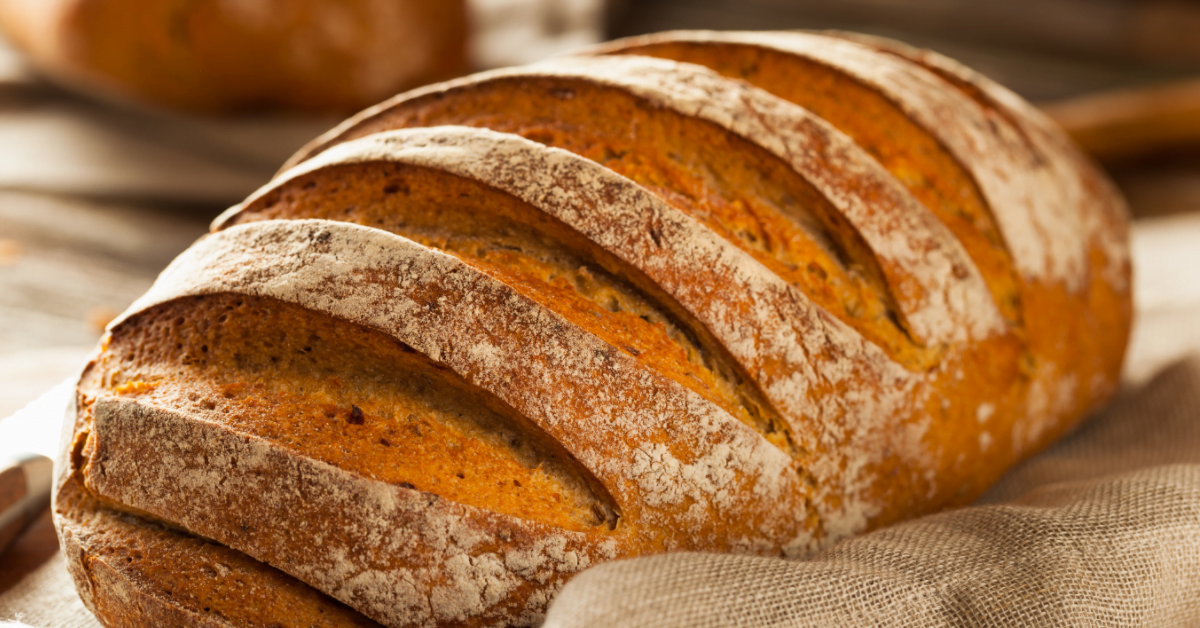Introduction
There is something indescribably comforting about the smell of freshly baked bread coming through your room. If you’re a foodie who loves sourdough and artisan bread, you know that this bread is more than just food; They are a labor of love. But what do you do when you want to enjoy that rich crunch and toasty warmth with your favorite sourdough or artisan bread? Fear not, fellow foodies, we have you covered. We will explore the art of Sourdough and Artisanal Bread toasting.
What is Sourdough and Artisanal Bread
Let’s take a moment to appreciate the unique qualities of sourdough and artisanal bread. Both are far from your standard sliced supermarket loaf, and that’s what makes them so special.
Sourdough Bread
Sourdough is a naturally leavened bread made from a mixture of flour and water fermented by wild yeast and lactobacilli bacteria. The slow fermentation process gives sourdough its characteristic tangy flavor and chewy texture. It’s often known for its rustic, crusty exterior and open crumb structure.
| -Buy Sourdough Bread | Check Price |
Artisanal Bread
Artisanal bread is handcrafted by skilled bakers who pay careful attention to every stage of the baking process. These breads come in various forms, from baguettes to ciabattas, and they often have unique flavor profiles, thanks to high-quality ingredients and long fermentation times.
| -Buy Artisanal Bread | Check Price |
Best Toaster for Toasting
The first step to achieving the perfect toast is to choose the right toaster. Not all toasters are created equal, and when dealing with artisanal and sourdough bread, you need a toaster that can handle the task. Here are a few considerations:
Wide Slots: Look for a toaster with extra-wide slots to accommodate the thicker slices of sourdough or artisanal bread. This ensures that the bread toasts evenly, without any parts left untoasted.
Adjustable Browning Control: Precise control over the toasting level is vital. You want your bread to be toasted to perfection, whether you prefer it lightly golden or with a deep, rich brown color.
Multiple Settings: Some toasters come with specific settings for different types of bread, including bagels, which can be quite handy for artisanal bread enthusiasts.
Convection Toasters: If you’re really serious about your toast, consider investing in a convection toaster. These models have built-in fans that circulate hot air, resulting in more even toasting.
Toasting Techniques for Foodies
Toasting Tips
Now that you have the right toaster, let’s explore the techniques that will make your sourdough and artisanal bread toast like a dream.
Allow Bread to Reach Room Temperature
Before toasting, let your bread reach room temperature. This helps the heat penetrate more evenly, ensuring that the center gets warm and toasty, not just the crust.
Adjust the Browning Level
Use the adjustable browning control to achieve your desired level of toastiness. Keep in mind that artisanal bread may require a slightly lower setting than sourdough due to its distinct texture.
Use the Bagel Setting
If your toaster has a bagel setting, give it a try. This setting toasts one side of the bread more than the other, which can be perfect for achieving the right balance of crust and softness in your bread.
Keep an Eye on It
It’s easy to get distracted, but watch your bread closely to avoid over-toasting. The line between perfectly toasted and burnt can be very fine, especially with artisanal and sourdough bread.
Opt for a Double Toast
If you prefer your sourdough or artisanal bread extra crispy, toast it once, then take it out and let it cool for a minute or two before toasting it again. This double toasting method can give you that satisfying crunch.
Flip It
For even toasting, you can flip your bread halfway through the toasting process. Just be careful when handling hot slices.
Use a Toaster Oven
If you’re toasting multiple slices at once or have a particularly thick slice, consider using a toaster oven. It offers more even heat distribution and better control over the toasting process.
Toppings and Pairings
Now that you’ve mastered the art of toasting sourdough and artisanal bread, it’s time to think about the toppings and pairings that will elevate your culinary experience.
Butter: Nothing beats the simple pleasure of warm toast slathered with good quality butter. The butter’s richness complements the tangy notes of sourdough perfectly.
Avocado: Create an avocado toast masterpiece with sliced avocados, a sprinkle of salt, and a drizzle of olive oil. Add some red pepper flakes for a touch of heat.
Jam and Jelly: The sweetness of fruit preserves or marmalade can be a delightful contrast to the hearty, savory notes of artisanal bread.
Nut Butters: Peanut butter, almond butter, or cashew butter can add creaminess and protein to your toast. Add a drizzle of honey or a sprinkle of cinnamon for extra flavor.
Cheese: Melt some cheese onto your toast for a gooey, savory treat. Try cheddar, Gruyère, or a creamy brie.
Poached Eggs: Top your toast with perfectly poached eggs for a hearty breakfast or brunch option. A dash of hollandaise sauce can take it to the next level.
Open-Faced Sandwiches: Use your toasted bread as the base for open-faced sandwiches. Layer on your favorite ingredients, such as roasted vegetables, prosciutto, or smoked salmon.
Conclusion
Sourdough and artisan bread are culinary treasures worth fully enjoying. With the right toaster and toasting techniques, you can experiment with different flavors and textures of this bread between each crispy bite. Try combining different toppings to create your gourmet toast. Whether it’s a quick breakfast or a leisurely brunch, these toasting tips for foodies will help you experience the magic of sourdough and artisan bread in the comfort of your kitchen. Happy toasting!

